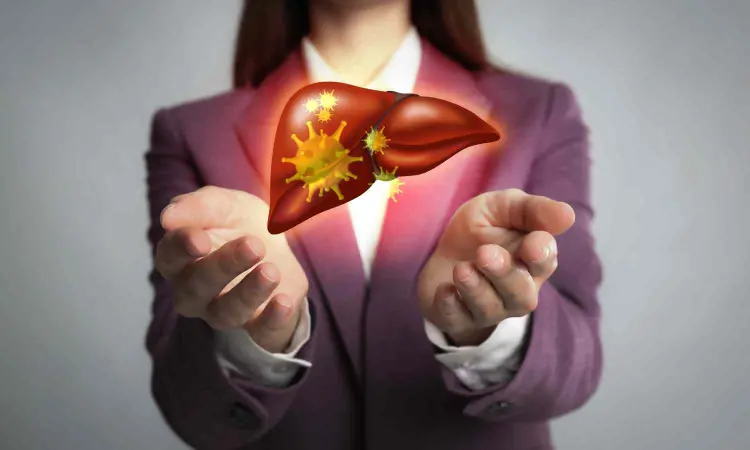- Home
- Medical news & Guidelines
- Anesthesiology
- Cardiology and CTVS
- Critical Care
- Dentistry
- Dermatology
- Diabetes and Endocrinology
- ENT
- Gastroenterology
- Medicine
- Nephrology
- Neurology
- Obstretics-Gynaecology
- Oncology
- Ophthalmology
- Orthopaedics
- Pediatrics-Neonatology
- Psychiatry
- Pulmonology
- Radiology
- Surgery
- Urology
- Laboratory Medicine
- Diet
- Nursing
- Paramedical
- Physiotherapy
- Health news
- Fact Check
- Bone Health Fact Check
- Brain Health Fact Check
- Cancer Related Fact Check
- Child Care Fact Check
- Dental and oral health fact check
- Diabetes and metabolic health fact check
- Diet and Nutrition Fact Check
- Eye and ENT Care Fact Check
- Fitness fact check
- Gut health fact check
- Heart health fact check
- Kidney health fact check
- Medical education fact check
- Men's health fact check
- Respiratory fact check
- Skin and hair care fact check
- Vaccine and Immunization fact check
- Women's health fact check
- AYUSH
- State News
- Andaman and Nicobar Islands
- Andhra Pradesh
- Arunachal Pradesh
- Assam
- Bihar
- Chandigarh
- Chattisgarh
- Dadra and Nagar Haveli
- Daman and Diu
- Delhi
- Goa
- Gujarat
- Haryana
- Himachal Pradesh
- Jammu & Kashmir
- Jharkhand
- Karnataka
- Kerala
- Ladakh
- Lakshadweep
- Madhya Pradesh
- Maharashtra
- Manipur
- Meghalaya
- Mizoram
- Nagaland
- Odisha
- Puducherry
- Punjab
- Rajasthan
- Sikkim
- Tamil Nadu
- Telangana
- Tripura
- Uttar Pradesh
- Uttrakhand
- West Bengal
- Medical Education
- Industry
New Tool for Liver Health: Spectral CT-Based ECV Offers Accurate Cirrhosis Assessment reports research

China: A new study published in Scientific Reports highlights the potential of a non-invasive imaging technique to evaluate the severity of liver cirrhosis. Researchers led by Dr. Hong Zhang from the Department of Radiology at the Affiliated Xi’an Central Hospital of Xi’an Jiaotong University in China have demonstrated that extracellular volume fraction (ECV) measured by spectral CT could serve as a reliable marker for grading cirrhosis severity.
Liver cirrhosis, a chronic condition characterized by irreversible scarring and impaired liver function, is commonly assessed using tools like the Child-Pugh classification and the MELD-Na score. However, both methods rely on clinical and biochemical parameters that can be variable or insufficient for precise staging. This study aimed to evaluate whether ECV values derived from spectral CT scans could offer a more consistent and objective alternative.
The retrospective analysis included 172 individuals, with 127 diagnosed with liver cirrhosis and 45 serving as healthy controls. Participants underwent hepatic enhancement imaging using spectral CT, from which ECV values were calculated based on iodine concentration during the delayed imaging phase.
The key findings of the study were as follows:
- ECV values increased progressively with worsening liver function.
- Mean ECV values were 25.49 for the control group, 29.73 for Child-Pugh class A, 35.64 for class B, and 45.30 for class C.
- There was a statistically significant differences between all groups.
- There was a strong positive correlation (r = 0.791) between ECV values and Child-Pugh scores.
- ECV demonstrated superior diagnostic performance compared to MELD-Na in differentiating cirrhosis stages.
- AUC for ECV was 0.901 between Child-Pugh classes A and B and 0.966 between classes B and C.
- In comparison, MELD-Na showed lower AUCs of 0.772 and 0.868 for the same comparisons.
- Multivariate analysis confirmed ECV as an independent predictor of cirrhosis severity (OR = 1.61).
While the findings are promising, the researchers acknowledged several limitations. The study’s retrospective nature introduces the possibility of selection bias. Additionally, the relatively small sample size—especially among those in the most severe Child-Pugh class C—may restrict the generalizability of the results. Another constraint involved the imaging protocol, which used a fixed 180-second delay for contrast agent administration; future work may explore whether varying this interval could yield more accurate measurements.
Despite these limitations, the study suggests that spectral CT-derived ECV values may offer a robust, non-invasive alternative for evaluating liver cirrhosis. The researchers advocate for larger, prospective studies to further validate these findings and explore the technique’s clinical utility across different cirrhosis etiologies.
Reference:
Zhang, H., Hao, E., Xia, D., Ma, M., Wu, J., Liu, T., Gao, M., & Wu, X. (2025). Estimating liver cirrhosis severity with extracellular volume fraction by spectral CT. Scientific Reports, 15(1), 1-8. https://doi.org/10.1038/s41598-025-03717-x
Dr Kamal Kant Kohli-MBBS, DTCD- a chest specialist with more than 30 years of practice and a flair for writing clinical articles, Dr Kamal Kant Kohli joined Medical Dialogues as a Chief Editor of Medical News. Besides writing articles, as an editor, he proofreads and verifies all the medical content published on Medical Dialogues including those coming from journals, studies,medical conferences,guidelines etc. Email: drkohli@medicaldialogues.in. Contact no. 011-43720751


